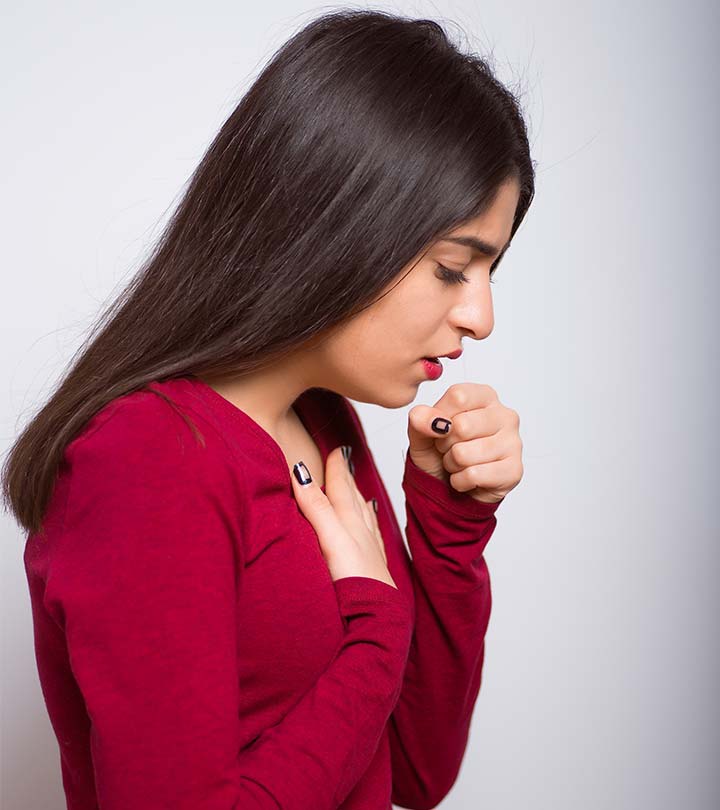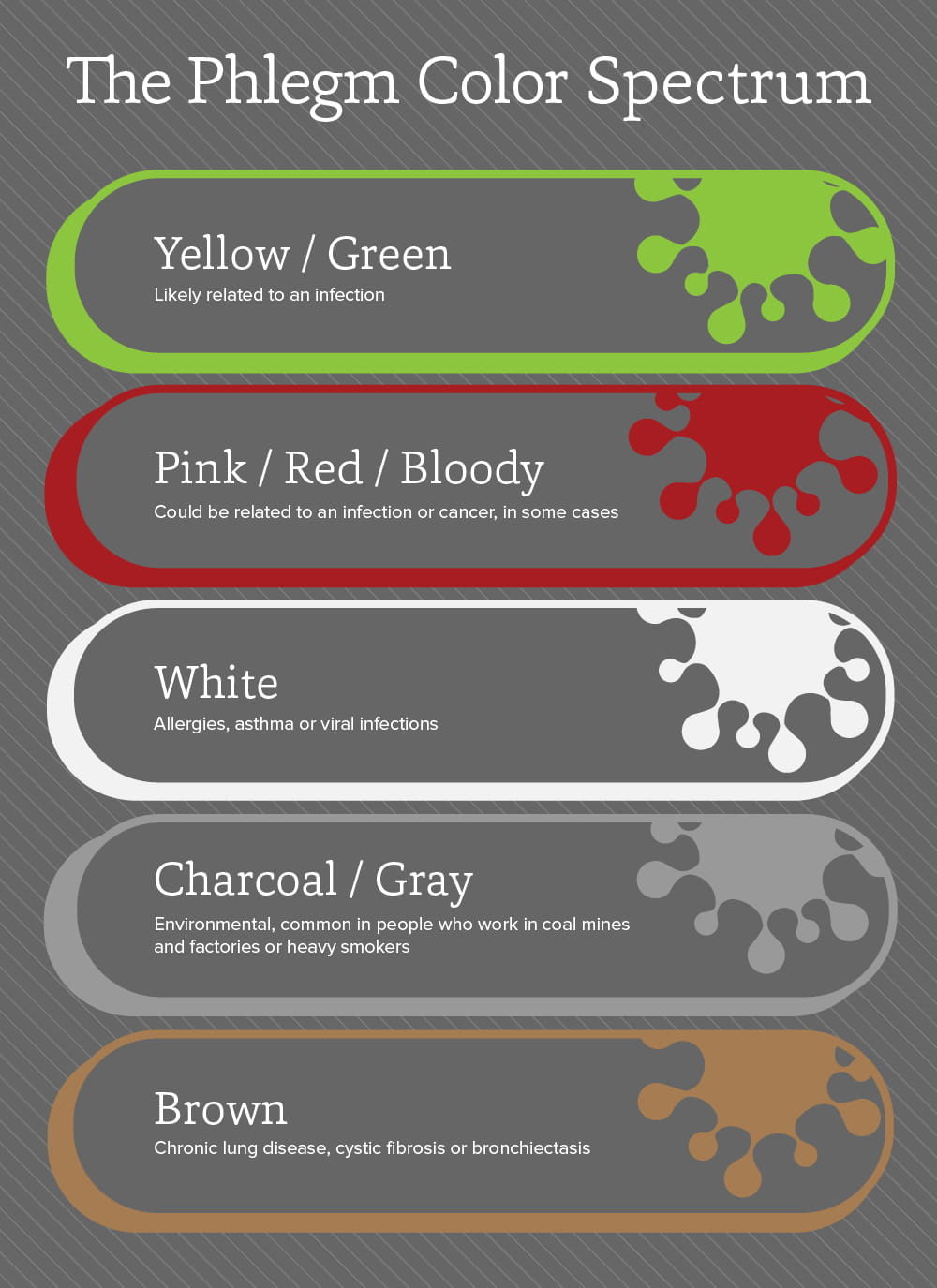At one time, many thought that changes in sputum color were a sign of infection. When accompanied by other symptoms, this may be true. There are variables other than illness, however, that contribute to phlegm color. Health care providers suggest that allergies, types of foods eaten and the time of day also contribute to various sputum colors.
Phlegm is a type of mucus which is produced by the mucus membranes that line the respiratory tract. The color of the phlegm helps in diagnosis. A phlegm color chart was commonly used by doctors and nurses to detect COPD or chronic obstructive pulmonary disease in patients. However, for minor cases of flu and cold, a color chart is not necessary. Phlegm Color Chart Rpg Maker Xp Warcraft Amy Winehouse Dingle Zoom Out Preloader When Doves Cry The Voice Australia 2018 Performance Live Spotify Download Lightroom Serial Number 5.7.1 Normal mucus is a clear color and is thick and viscous, similar to the texture of glue. You probably don’t have any infection or virus if your snot is clear. What Does the Color of My Phlegm Means? Yellow, Brown, Green & More Revealed The Cause of Phlegm.

Bacterial colonies produce a wide range of colors when their numbers reach certain levels. Certain strains of staphylococcus appear yellow, pseudomonas may appear green and serratia colonies are typically clear. These colors may or may not appear in phlegm until an infectious process progresses and is accompanied by many other symptoms. Various sputum colors might be related to irritants or pollutants inhaled in the air or related to the amount and thickness of the phlegm.
Generally, people consider clear phlegm to be normal, but individuals sneeze and cough up clear phlegm when experiencing allergies, viral or certain bacterial infections. Many fail to recognize an illness because of the presence of clear secretions, but sputum color alone is not an indicator of good health. Clear mucus accompanied by nasal congestion, sore throat, breathing difficulties and a fever, typically represents a more serious condition, and under these circumstances, clear mucus generally becomes thicker and more prevalent.

Many associate yellow sputum and nasal discharge with the onset of an infection, but this is not the case unless an individual has other symptoms. Yellow phlegm first thing in the morning may be the body ridding itself of old mucus. This is especially true if someone does not see this color in phlegm the rest of the day. Yellow mucus may also be associated with allergies. White phlegm is also not generally a concern unless it is thick and followed by other indications.
Green mucus coughed up first thing in the morning may also be harmless if not seen the rest of the day. In the presence of infection or irritant, white blood cells rush to the area in order to protect the body. Health care providers believe the green color may be the result of an enzyme produced by white blood cells called myeloperoxidase. Fungal infections also typically generate green or sometimes black colored phlegm.
Bleeding in the respiratory tract often appears as blood tinged, rusty or red sputum, and may indicate pneumonia, chronic lung conditions or cancer. This sputum color may also appear after eating or drinking certain foods. This is the case with persons who have recently consumed colas, dark wines or after eating chocolate.
Consistently rated one of the worst words in the English language, 'phlegm' is hardly a great conversation starter. Medically speaking, however, your phlegm can be an important barometer for your health. Serious changes in your phlegm can be a valid reason to speak to your physician.
'Color changes in your phlegm can mean a number different things health-wise. Importantly, you can observe these changes quickly and easily, and these can help you decide if you need to seek medical attention,' explained Dr. Barbara Kreel, Geisinger otolaryngologist.
What is phlegm?
The body uses mucus to trap germs and contaminants. Many parts of the body produce mucus, like the GI tract, throat, nose, sinuses, mouth and more.
Phlegm is mucus from your lungs and lower airways that protects against germs and foreign contaminants like pollution.
'Clear phlegm is normal. It’s made of water, salt and other cells,' said Dr. Kreel. 'When you become sick, the phlegm may thicken as well as change color as your body fights off the infection.'

Here are what some of the colors of your phlegm might be trying to tell you:
White
White phlegm is normally no cause for alarm. It indicates sinus activity and nasal congestion. As the airway passages get inflamed the phlegm in the respiratory tract can thicken and become white.
Yellow
Yellow phlegm is a sign that your body is fighting off a mild infection.
'White blood cells are responsible for fighting infections, and as they get picked up in the mucus, they can cause it to have a yellowish hue,' said Dr. Kreel.
Green
Green phlegm is an indication that your body is fighting off a more serious infection. While the green color may be alarming, it is a natural byproduct of the immune system activity necessary to fight off the infection. Consider seeing your doctor if your other symptoms are getting worse.
Red
Phlegm Color Chart White
Red or pink phlegm can be a more serious warning sign. Red or pink indicates that there is bleeding in the respiratory tract or lungs.
Heavy coughing can cause bleeding by breaking the blood vessels in the lungs, leading to red phlegm. However, more serious conditions can also cause red or pink phlegm.
Chest Phlegm Color Chart
'If you’re experiencing red or pink phlegm, you should talk to a physician sooner,' said Dr. Kreel. 'As a one-time symptom, it may not really be an issue, but if persistent, it might signal conditions
like tuberculosis or a pulmonary embolism. Determine if you are experiencing other symptoms which may indicate something serious, and always err on the side of safety.'
Brown
Brown phlegm can also be a warning sign because it signals prior bleeding. As the blood ages, it turns brown. If you notice brown phlegm, you should see your doctor.
Black
Black phlegm is cause for alarm—it likely signals a fungal infection, especially for people with compromised immune systems. You should see your doctor immediately.
'Bear in mind that phlegm discoloration is only part of the story,' explained Dr. Kreel. 'Just because your phlegm is white or yellow does not give you a clean bill of health. Phlegm color is a reference point that needs to be considered along with other symptoms. If you have any reason to think your condition is worsening or your symptoms are bad, talk to your doctor.'
Geisinger otolaryngologist Dr. Barbara Kreel, MD,sees patients at Geisinger Wyoming Valley Medical Center in Wilkes-Barre. To schedule an appointment with Dr. Kreel or another ENT specialist, please call 800-275-6401 or visit Geisinger.org.